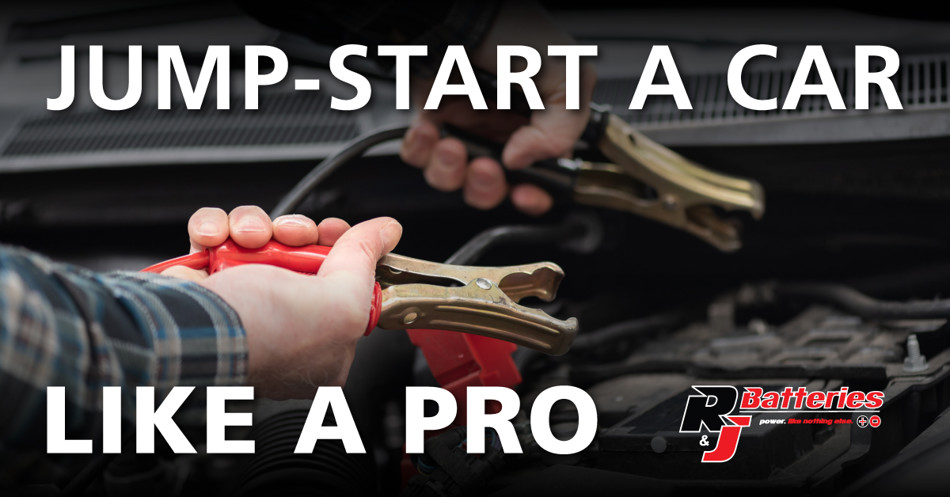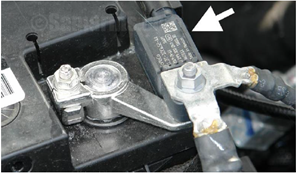How to Jump Start a Car like a Pro
Finding yourself with a flat or discharged car battery can be a stressful situation especially if you're stranded in an unfamiliar location. Knowing how to jump start a car is a vital skill for any driver. It can save you time, money and a call to roadside assistance.

In this guide, we'll walk you through the process step-by-step. We'll cover everything from safety precautions to the correct order for attaching jumper cables. Whether you're a seasoned driver or a beginner, this guide will provide you with the knowledge you need.
Understanding the Basics of a Discharged Battery
A discharged battery is often the culprit when your car won't start. It's usually due to electrical loads being pulled from the battery when the vehicle is not running, such as leaving the lights on overnight, listening to the radio whilst at the drive in movies or not driving the car for long periods of time. If you hear clicking noises when you turn the key and the engine does not start, it may be a sign your battery is discharged.
A battery will also struggle to start your car if it is old and its capacity to provide energy has decreased. Car batteries will struggle even more in colder conditions.
When a battery is discharged, it can't provide the necessary power to start the engine. That's where jump starting comes in.
Jump starting uses a donor vehicle’s battery to give your discharged battery a temporary boost. This allows your car to start the engine so that you can move it to a safe location and recharge the battery.
Safety First: Preparing to Jump Start Your Car
Before you jump start a car, safety should be your top priority. It's crucial to understand the risks involved. Jump starting a car involves dealing with electricity. This can cause sparks or short circuits if not done correctly. Where possible, always wear protective gear. This includes gloves and safety glasses. Ensure both cars are in park (automatic)or neutral (manual), with the parking brake on. The ignition should be off in both vehicles before connecting cables.
Here are some safety tips to remember:
- Never touch the metal parts of the jumper cables once they're connected.
- Don't jump start a car if the battery is cracked or leaking.
- Always connect to the jump points in a vehicle if they are provided (check the owner’s manual).
- Never connect the clamp to a battery terminal which has a current sensor installed

Remember, if you're unsure, it's best to call for professional help.
What You'll Need to Jump Start a Car
To jump start a car, you'll need some essential items. The first is a set of jumper cables. These are special cables designed for this task and are always good to keep handy in your car.
You'll also need a second car or donor vehicle with a good battery. This car will provide the power needed to start your car.
Tip: An easier and safer option is to use a portable jump starter. Jump starters are designed for this task and have built in reverse polarity and spike protection. Speak to your local R&J Batteries branch for more information.
Here's a list of what you'll need:
- A set of jumper cables or portable jump pack
- A donor vehicle with a working battery (not required with a portable jump starter)
- Protective gear (gloves and safety glasses)
Remember, always check the vehicle owner’s manual for jump point locations and any specific instructions about jump starting the vehicle.
Jump Start Procedure
- Examine the discharged battery to make sure that it is not damaged, leaking or gassing. Check that both vehicles operate at the same voltage (e.g. 12V).
- Remove the keys from the disabled vehicle’s ignition (if applicable) and put them in your pocket. This ensures you have control of the vehicle during the process.

3. Connect the positive jump lead to the positive jump point of the disabled vehicle. If jump points are not fitted, connect the positive jump lead to the positive terminal of the discharged battery. Connect the other end of the jump lead to the donor vehicle’s positive jump point (if fitted) or the positive terminal of the battery.
4. Connect the negative jump lead to the negative jump point or an unpainted metal part of the disabled vehicle (e.g. engine block). Do not connect directly to the negative battery terminal. Connect the other end to the donor vehicle’s jump point if available or an unpainted metal part.
5. Start the engine of the donor vehicle or activate the jump pack. Wait for 2 minutes to allow the batteries to equalise.
6. Start the disabled vehicle. Do not remove any of the jump start cables yet.
7. Allow the disabled vehicle to run for at least 2 minutes.
8. Disconnect the negative jump lead from the disabled vehicle first and then the donor vehicle.
9. Disconnect the positive jump lead from both vehicles.
10. Switch off the donor vehicle’s engine however do not switch off the disabled vehicle’s engine immediately.
After a vehicle has been Jump Started
When a battery is discharged and the vehicle has been jump started, driving the vehicle for 20 minutes won’t adequately recharge the battery. While a vehicle’s Battery Management System may allow some charge, it takes significantly longer than 20 minutes to properly restore a heavily discharged battery.
To give the battery the best chance to fully recover, it should be charged using a mains powered multi-stage battery charger. Neglecting this step can increase the likelihood of repeated jump starts.
For a lead acid battery to be charged properly, the charge current should not exceed C/10, where C is the rated battery capacity in Ah. This means that a 75Ah battery should not be charged at more than 7.5A (75Ah ÷ 10).
A healthy battery will take at least 12 hours (e.g. overnight) to fully charge from a discharged state using a C/10 charge rate.
If a battery has been discharged for an extended period, it is less likely to fully recover as lead acid batteries sulphate when discharged. Sulphation effectively accelerates the ageing process of a battery by reducing its ability to store and deliver energy.
The Importance of Knowing How to Jump Start
Knowing how to jump start a car is a valuable skill. It can save you time, money and stress in an emergency situation.
Remember, safety is paramount. Always follow the correct procedures to protect yourself and your vehicle.
If you have any questions or need further assistance, contact the battery experts at your closest R&J Batteries.



